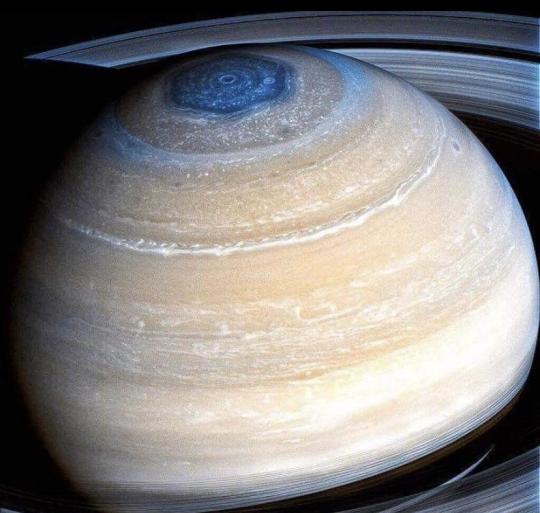#The clearest picture of saturn ever taken
Photo

The clearest picture of saturn ever taken - See more viral images on ViralTiger.org
0 notes
Photo

The clearest picture of saturn ever taken via /r/space https://ift.tt/2Y7fM0d
0 notes
Photo

The clearest image ever taken of Saturn via /r/spaceporn. Picture posted by /u/Shikidoodles.
23 notes
·
View notes
Photo
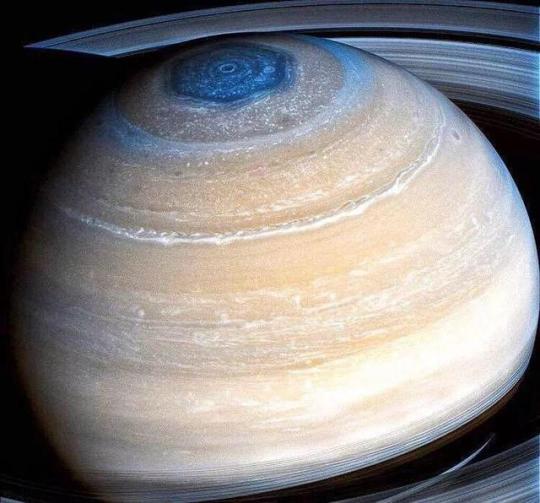
One of the clearest pictures of Saturn ever taken.
9 notes
·
View notes
Text
Solar System: Things to Know This Week
Reaching out into space yields benefits on Earth. Many of these have practical applications — but there's something more than that. Call it inspiration, perhaps, what photographer Ansel Adams referred to as nature's "endless prospect of magic and wonder."
Our ongoing exploration of the solar system has yielded more than a few magical images. Why not keep some of them close by to inspire your own explorations? This week, we offer 10 planetary photos suitable for wallpapers on your desktop or phone. Find many more in our galleries. These images were the result of audacious expeditions into deep space; as author Edward Abbey said, "May your trails be crooked, winding, lonesome, dangerous, leading to the most amazing view."

1. Martian Selfie
This self-portrait of NASA's Curiosity Mars rover shows the robotic geologist in the "Murray Buttes" area on lower Mount Sharp. Key features on the skyline of this panorama are the dark mesa called "M12" to the left of the rover's mast and pale, upper Mount Sharp to the right of the mast. The top of M12 stands about 23 feet (7 meters) above the base of the sloping piles of rocks just behind Curiosity. The scene combines approximately 60 images taken by the Mars Hand Lens Imager, or MAHLI, camera at the end of the rover's robotic arm. Most of the component images were taken on September 17, 2016.
800 x 600
1024 x 768
1280 x 1024
1600 x 1200
1280 x 800
1440 x 900
1920 x 1200
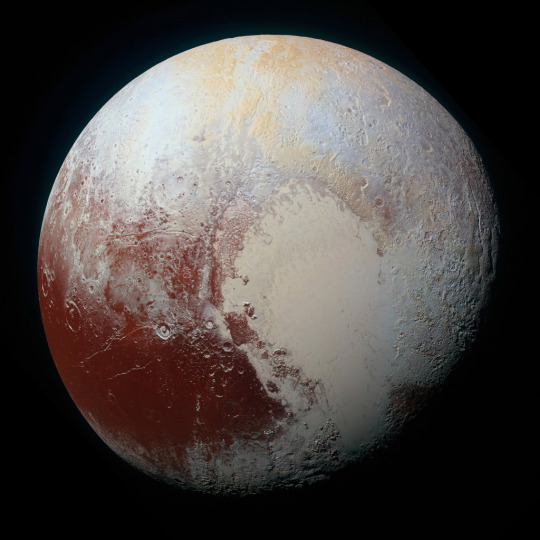
2. The Colors of Pluto
NASA's New Horizons spacecraft captured this high-resolution, enhanced color view of Pluto on July 14, 2015. The image combines blue, red and infrared images taken by the Ralph/Multispectral Visual Imaging Camera (MVIC). Pluto's surface sports a remarkable range of subtle colors, enhanced in this view to a rainbow of pale blues, yellows, oranges, and deep reds. Many landforms have their own distinct colors, telling a complex geological and climatological story that scientists have only just begun to decode.
800 x 600
1024 x 768
1280 x 1024
1600 x 1200
1280 x 800
1440 x 900
1920 x 1200

3. The Day the Earth Smiled
On July 19, 2013, in an event celebrated the world over, our Cassini spacecraft slipped into Saturn's shadow and turned to image the planet, seven of its moons, its inner rings — and, in the background, our home planet, Earth. This mosaic is special as it marks the third time our home planet was imaged from the outer solar system; the second time it was imaged by Cassini from Saturn's orbit, the first time ever that inhabitants of Earth were made aware in advance that their photo would be taken from such a great distance.
800 x 600
1024 x 768
1280 x 1024
1600 x 1200
1280 x 800
1440 x 900
1920 x 1200
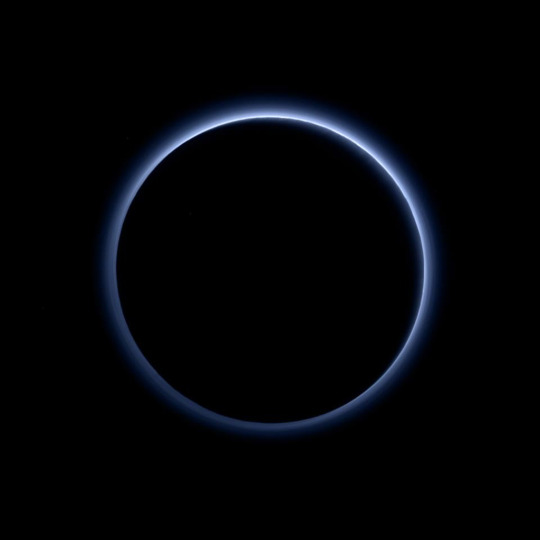
4. Looking Back
Before leaving the Pluto system forever, New Horizons turned back to see Pluto backlit by the sun. The small world's haze layer shows its blue color in this picture. The high-altitude haze is thought to be similar in nature to that seen at Saturn's moon Titan. The source of both hazes likely involves sunlight-initiated chemical reactions of nitrogen and methane, leading to relatively small, soot-like particles called tholins. This image was generated by combining information from blue, red and near-infrared images to closely replicate the color a human eye would perceive.
800 x 600
1024 x 768
1280 x 1024
1600 x 1200
1280 x 800
1440 x 900
1920 x 1200

5. Catching Its Own Tail
A huge storm churning through the atmosphere in Saturn's northern hemisphere overtakes itself as it encircles the planet in this true-color view from Cassini. This picture, captured on February 25, 2011, was taken about 12 weeks after the storm began, and the clouds by this time had formed a tail that wrapped around the planet. The storm is a prodigious source of radio noise, which comes from lightning deep within the planet's atmosphere.
800 x 600
1024 x 768
1280 x 1024
1600 x 1200
1280 x 800
1440 x 900
1920 x 1200
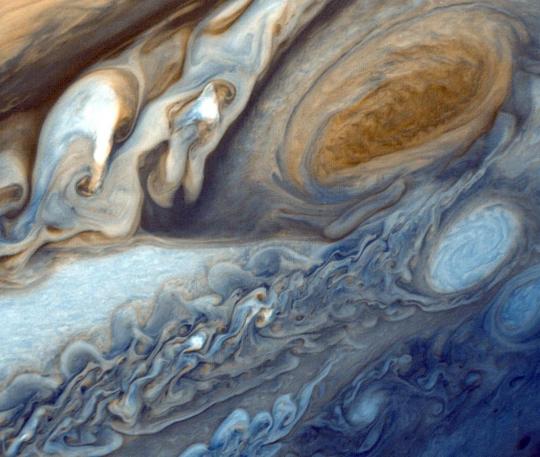
6. The Great Red Spot
Another massive storm, this time on Jupiter, as seen in this dramatic close-up by Voyager 1 in 1979. The Great Red Spot is much larger than the entire Earth.
800 x 600
1024 x 768
1280 x 1024
1600 x 1200
1280 x 800
1440 x 900
1920 x 1200
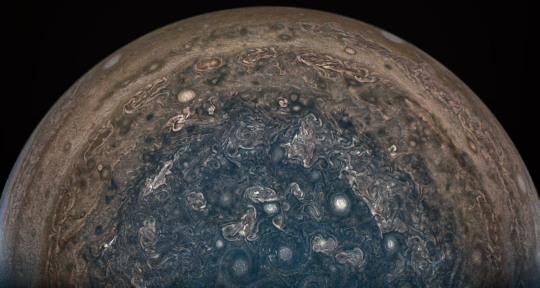
7. More Stormy Weather
Jupiter is still just as stormy today, as seen in this recent view from NASA's Juno spacecraft, when it soared directly over Jupiter's south pole on February 2, 2017, from an altitude of about 62,800 miles (101,000 kilometers) above the cloud tops. From this unique vantage point we see the terminator (where day meets night) cutting across the Jovian south polar region's restless, marbled atmosphere with the south pole itself approximately in the center of that border. This image was processed by citizen scientist John Landino. This enhanced color version highlights the bright high clouds and numerous meandering oval storms.
800 x 600
1024 x 768
1280 x 1024
1600 x 1200
1280 x 800
1440 x 900
1920 x 1200
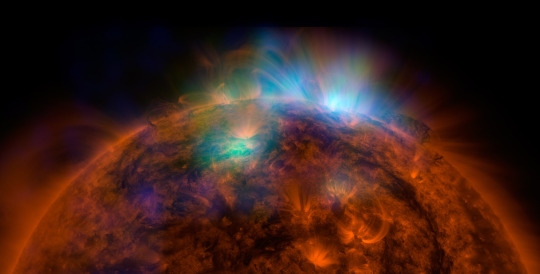
8. X-Ray Vision
X-rays stream off the sun in this image showing observations from by our Nuclear Spectroscopic Telescope Array, or NuSTAR, overlaid on a picture taken by our Solar Dynamics Observatory (SDO). The NuSTAR data, seen in green and blue, reveal solar high-energy emission. The high-energy X-rays come from gas heated to above 3 million degrees. The red channel represents ultraviolet light captured by SDO, and shows the presence of lower-temperature material in the solar atmosphere at 1 million degrees.
800 x 600
1024 x 768
1280 x 1024
1600 x 1200
1280 x 800
1440 x 900
1920 x 1200
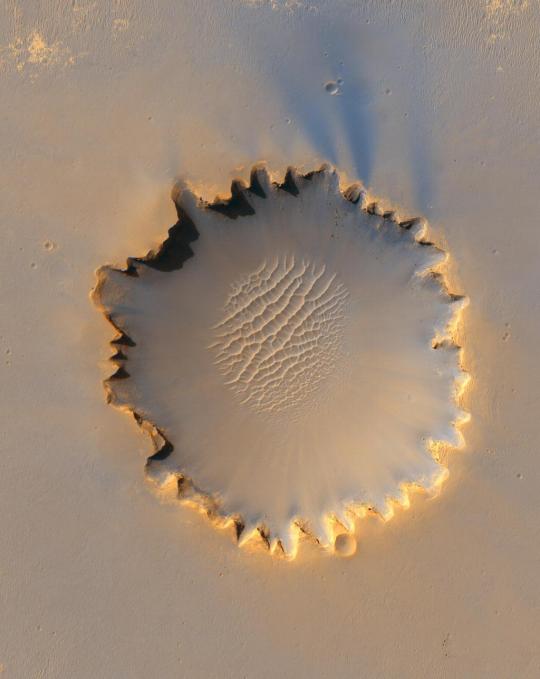
9. One Space Robot Photographs Another
This image from NASA's Mars Reconnaissance Orbiter shows Victoria crater, near the equator of Mars. The crater is approximately half a mile (800 meters) in diameter. It has a distinctive scalloped shape to its rim, caused by erosion and downhill movement of crater wall material. Since January 2004, the Mars Exploration Rover Opportunity has been operating in the region where Victoria crater is found. Five days before this image was taken in October 2006, Opportunity arrived at the rim of the crater after a drive of more than over 5 miles (9 kilometers). The rover can be seen in this image, as a dot at roughly the "ten o'clock" position along the rim of the crater. (You can zoom in on the full-resolution version here.)
800 x 600
1024 x 768
1280 x 1024
1600 x 1200
1280 x 800
1440 x 900
1920 x 1200
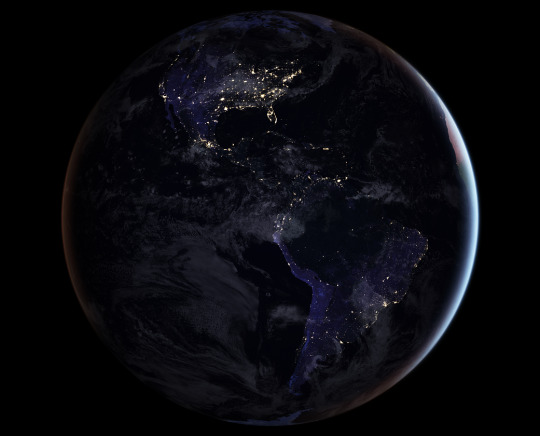
10. Night Lights
Last, but far from least, is this remarkable new view of our home planet. Last week, we released new global maps of Earth at night, providing the clearest yet composite view of the patterns of human settlement across our planet. This composite image, one of three new full-hemisphere views, provides a view of the Americas at night from the NASA-NOAA Suomi-NPP satellite. The clouds and sun glint — added here for aesthetic effect — are derived from MODIS instrument land surface and cloud cover products.
Full Earth at night map
Americas at night
Discover more lists of 10 things to know about our solar system HERE.
Make sure to follow us on Tumblr for your regular dose of space: http://nasa.tumblr.com
#cassini#saturn#jupiter#mars#curiosityrover#opportunityrover#earth#suomi-npp#nustar#sdo#greatredspot
3K notes
·
View notes
Photo

Cassini obtains clearest-ever view of Saturn’s pierogi-shaped moon Pan.
Cassini flew to within 15,000 miles of Saturn’s tiny moon Pan March 7 and obtained the clearest pictures yet taken of the satellite.
Measuring only 21 miles long by 12 miles wide, Pan orbits in the Encke Gap of Saturn’s A-ring. Pan’s existence was theorized in the late 1980s by astronomers reanalyzing data from the 1981 Voyager 2 flyby of Saturn and officially confirmed in 1990. Up until this year, only lower-resolution images of Pan from further away were obtained.
Cassini is scheduled to end its mission September 15 when it will plunge into the planet’s atmosphere.
879 notes
·
View notes
Photo

🔥 One of the clearest pictures ever taken of Saturn
0 notes
Photo
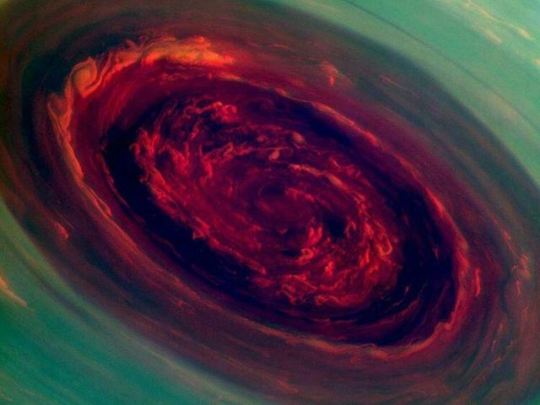
Via @space_time_official - The clearest picture ever taken of Saturn’s mysterious hexagonal hurricane 🌀 ______________________________ ______________________________ . . . Image Credit: @cassinisaturn http://ift.tt/2m6lOhp
0 notes
Photo

The clearest image ever taken of Saturn via /r/spaceporn. Picture posted by /u/jacksonsprite.
3 notes
·
View notes
Photo
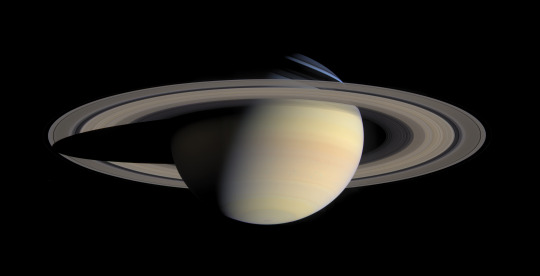
The "clearest image ever taken of Saturn" that has been circulating lately is just an oversharpened version of a small image, and I'm honestly appalled that someone thought it made Saturn look better. Zoom in to appreciate the beauty of the true highest-definition image of Saturn, 8888x4544 via /r/spaceporn. Picture posted by /u/galaxxxxxy.
1 note
·
View note
Photo

The clearest image ever taken from saturn via /r/spaceporn. Picture posted by /u/oema_11.
1 note
·
View note
Photo

Clearest image ever taken of Saturn. via /r/spaceporn. Picture posted by /u/Al-Andalusia.
2 notes
·
View notes
Photo

Clearest image ever taken of Saturn. via /r/spaceporn. Picture posted by /u/rushinlobster.
1 note
·
View note
